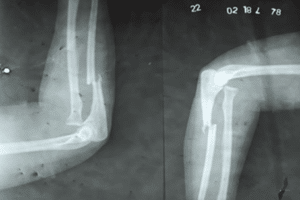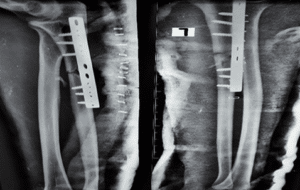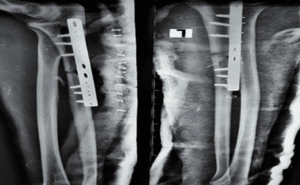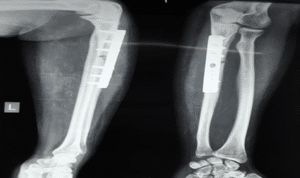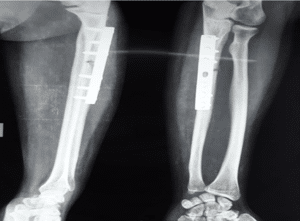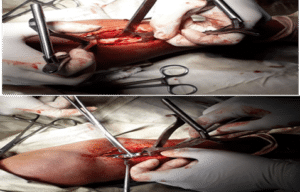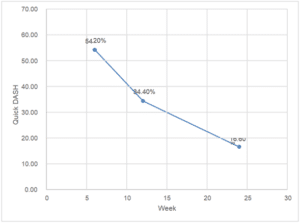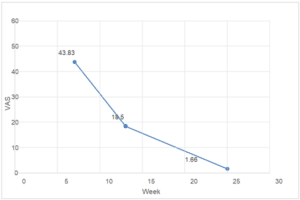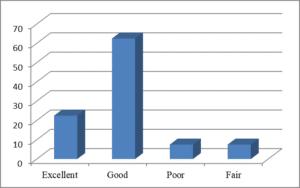Radiological and Functional Outcome of Internal Fixation of Monteggia Fracture Dislocation by DCP in Adult Patient
Mushfique Manjur1*, Md Atiqul Rahaman Khan2, Md Al Mahmud Mallick3, Md Mahbub Ali4, Md Tareq Imam5
1Assistant Professor, Orthopaedics, Monno Medical College, Manikganj, Bangladesh
2Assistant Professor, Orthopaedics, Monno Medical College, Manikganj, Bangladesh
3Assistant Professor, Orthopaedics, Monno Medical College, Manikganj, Bangladesh
4Classified Specialist, Orthopaedics, Combined Military Hospital (CMH), Bogura, Bangladesh
5Medical Officer, Orthopaedics, Chattogram Medical College, Chattogram, Bangladesh
*Correspondence author: Mushfique Manjur, Assistant Professor, Orthopaedics, Monno Medical College, Manikganj, Bangladesh;
Email: [email protected]
Published Date: 26-04-2023
Copyright© 2023 by Manjur M, et al. All rights reserved. This is an open access article distributed under the terms of the Creative Commons Attribution License, which permits unrestricted use, distribution, and reproduction in any medium, provided the original author and source are credited.
| Received 06 Apr, 2023 | Accepted 19 Apr, 2023 | Published 26 Apr, 2023 |
Abstract
Background: Surgical reduction and internal fixation are the mainstays for the treatment of the Monteggia fracture-dislocation in adult and there are various surgical modalities for internal fixation. Various types of implants used in fixation of Monteggia fracture dislocation in adult and the outcome also differ. Small DCP is one of the important implants. The fracture of the proximal third of the ulna with dislocation of the head of the radius was commonly known as Monteggia fracture dislocation.
Objective: To assess the radiological and functional outcome of internal fixation of monteggia fracture dislocation by (DCP) in adult patients.
Methods: This prospective observational study had been conducted in Monno Medical College and Hospital, Manikganj, to evaluate the results of open reduction and internal fixation of the ulna with small DCP and anatomical reduction of radial head in early cases of Monteggia fracture dislocation in adult from January 2022 to December 2022. Total 40 patients with radiologically proven closed Monteggia fracture-dislocation that were enrolled in this study by purposive sampling method. Radiological and functional outcome were assessed and followed up for 24 weeks.
Results: Results were evaluated by Quick DASH score, VAS scale, ROM of flexion-extension and supination-pronation. Final functional outcome was done with Anderson criteria. Results: Total 40 patients were included. Among 15 (37.5%) patients were from 20-29 years age group, 8 (20.0%) were from 30-39 years age group, 11 (27.5%) were from 40-49 years age group and 6 (15.0%) were from 50-55 years age group. The mean age of the patients was 35.96±11.48 years where minimum age was 20 years and maximum age was 55 years. 32 (80.0%) patients were male and 8 (20.0%) patients were female. Out of the 40 patients, 35 (87.5%) presented with Bado type I fracture and 5 (12.5%) presented with Bado type II fracture. The mean time interval between injury and surgery was 10.13±3.86 days. Post-operative complications (tourniquet palsy and wound infection) developed in 5 (12.5%) patients. According to Anderson criteria nine (22.5%) patients had excellent, 25 (62.5%) patients had good, 3 (7.5%) had fair and 7 (7.5%) patients had poor outcome. Final outcome was satisfactory (excellent and good) in 35 (87.5%) patients and unsatisfactory (fair and poor) in 5 (12.5%) patients. Patients who had Bado type II fracture had less satisfactory outcome (p=0.004). Again, patients who had more time interval between injury and surgery also had less satisfactory outcome (p=0.012).
Conclusion: Monteggia fractures are uncommon injuries. The commonest type of monteggia fracture dislocation in adults according to Bado’s classification is type-1. Operative treatment of Monteggia fracture-dislocation by the selected implant, leads to excellent to good radiological and functional result with uncomplicated recovery in majority of the cases.
Keywords: Functional Outcome; Monteggia Fracture; Radial Head Dislocation; Ulna Fracture

